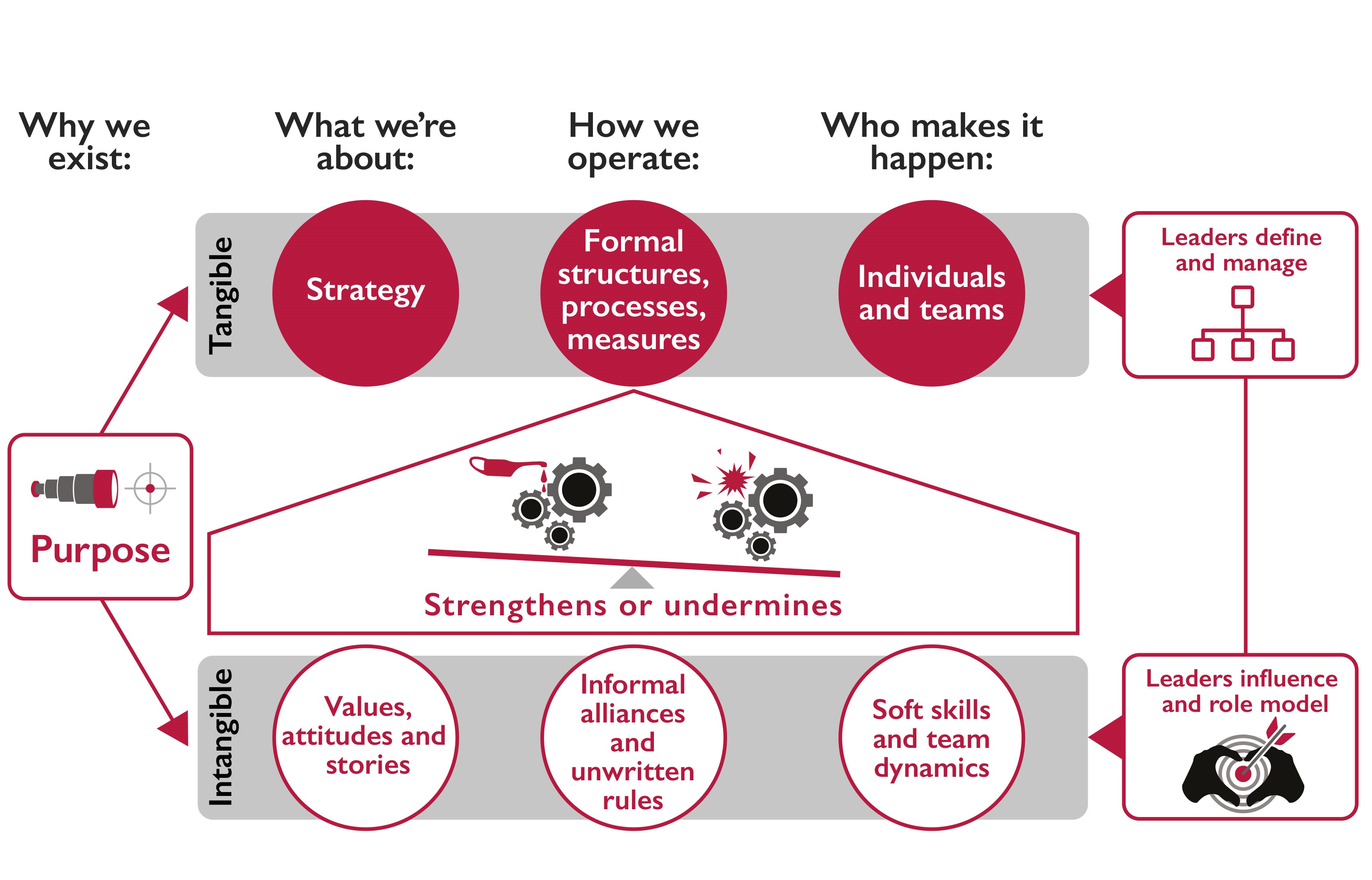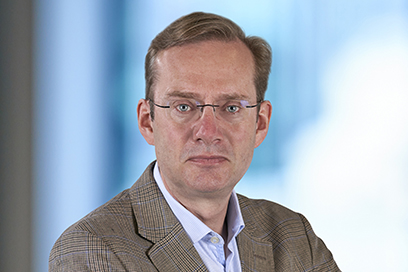During the Covid-19 crisis, leaders had to manage challenges against a backdrop of difficult personal and business circumstances and no one should underestimate the effort and energy it took to achieve so much in so little time.
Once operations stabilized, leaders considered what all that change meant for their organizations’ strategy, processes and structures. While doing this, some also invested the same energy and commitment into addressing softer, intangible aspects such as team dynamics, company values and the informal, unofficial ways things were done.
It was tempting to just focus on the tangible elements that were easier to articulate and measure progress against. But this risked creating serious, unintended consequences for their organizations and people.
We believe businesses that looked holistically across everything that influenced their organizational effectiveness would have taken the learnings from the pandemic's effects and will be best placed to weather potential future black swan events.
Q. What is a black swan event?
A. A black swan event is one that is unexpected, has high impact and, though less relevant for our purposes here, can be rationalized as unsurprising in hindsight.”
Think about what makes your organization effective
One fundamental component often underestimated when looking at an organization’s effectiveness is its purpose – why it exists. For most, this won’t have changed as a result of Covid-19, though a few companies saw a seismic shift in the short term: carmakers became medical equipment assembly lines and perfume houses produced hand sanitizer, for example.
If your organization’s purpose is understood and unchanged, you’re in a position to ask “How can we be most effective?”
At Berkeley, to help clients understand the elements that contribute towards their effectiveness, we’ve defined a simple organizational effectiveness framework. There are three main questions we suggest you and your team work together to answer.
Are you focusing on the right things for your organization?
Today, many leaders are taking time to step back and consider their company strategy. Does it need to be paused or revised in the short term to reflect Covid-19 learnings? Will the changes have a longer term effect on the organization and how it operates? While it’s important to review your strategy, at the same time, you need to ask what this means in terms of living up to your organization’s values and behaviors.
It will then be about not only delivering to a strategy but also considering how it will be delivered. With everyone operating under different pressures, values and behaviors will be tested in ways never thought possible. Getting these right cannot be taken lightly in terms of their effect on brand reputation, employee engagement and public perception.
To address the intangible aspects, you should consider how your organization’s values and behaviors translate to meet unusual circumstances. Do you need to rearticulate them to reflect new and evolving ways of working? How can you continue to promote and demonstrate them in a remote working world? How can you share great examples and strengthen your organization’s culture?
Have you shored up your operations for the mid to long term?
In response to Covid-19, organizations adapted day-to-day operations to reflect dramatic changes in business volumes – up and down – and the need to support a much greater degree of remote working. Many transformation programs were under review to decide whether the scope, timeline or means of delivery needed to change. So, leaders had to explore (and continue to do so) whether new ways of working weren't only sustainable but also supported their business' purpose.
At the same time, it was important to consider what changes could positively impact informal ways of working in the future. No matter how well defined processes and procedures are, organizations rely on informal alliances and personal relationships to make sure things run smoothly and efficiently. Take desk-side conversations, impromptu catch-ups and opportunistic meetings, for example. Each forms part of how we successfully operate. Replacing these with too much formal communication and tighter governance and controls, introduces a risk of inefficiency, disempowerment and reduced connectedness into the organization.
We have all seen the value of relationships in business. How can you encourage your employees to continue to invest, in person and virtually, in maintaining strong relationships at work – both within teams and across functions? You should also look for opportunities for people to connect outside of standard business activities and promote a healthy mix of formal and informal meetings. Are your people being more collaborative or more siloed? Is there a good balance of structured and unstructured opportunities to talk? Do employees feel encouraged to reach out to others in the organization, as well as to external suppliers and customers?
It’s important for everyone to be vigilant to pressure points in the organization. If processes prove cumbersome, you need to make sure there’s a channel for people speak up, share the problem and work together to adapt and improve the processes. Done well, this could be a fantastic opportunity to improve effectiveness across your organization, providing a trigger for change that (rightly) isn’t seen as a cost-saving exercise but instead about making it a better place for everyone to work.
Organizational effectiveness framework

- Improving organizational effectiveness requires focus on both tangible and intangible elements as they are closely interdependent – changing one dimension can have unforeseen consequences on the other
- Leaders tend to focus on the tangible elements, particularly under pressure, because they are more accessible and controllable
- Changing the tangibles is also easier because the focus is external on the system whereas changing the intangibles often requires leaders to look within themselves first.
Are you doing the right things to support your people and teams?
At the team level during a black swan event, business functions may remain the same, but how they operate, the balance of resourcing and the underpinning team structures could change as a result of shifts in strategy, processes and ways of working.
Leadership teams may use this time to look at the impact these changes will have on organization structure. But this should be in conjunction with the more intangible aspects of soft skills and team dynamics. You will need to act as a coach and supporter for your teams, providing pastoral care and helping them adapt.
Employees will find a working style that best suits them, while recognizing this may differ from the styles of other people in their team. Managers need to accept this and have open conversations to understand how the different styles can operate effectively together. How will people need to adapt? Who might need specific support?
Above all, trusting your employees will continue to be vital. Building and developing effective teams time and again in response to black swan events will be challenging for many organizations. There’s a risk managers might adopt a task-focused style that’s seen as micromanaging, placing too much emphasis on measuring individual employee productivity. What’s really needed is a focus on outcomes and team working rather than individual tasks. This will give employees and teams more autonomy and help create and build trust.
So… what next?
In any context, improving your organization’s effectiveness requires focus on both the tangible and the intangible elements – they’re interdependent. In today’s backdrop of significant social and economic change, there is a challenge and an opportunity to set the foundations for your organization’s future success. Take time to consider what you want your legacy to be and put the right steps in place accordingly. The benefits include being well placed to continue to weather challenging times.










